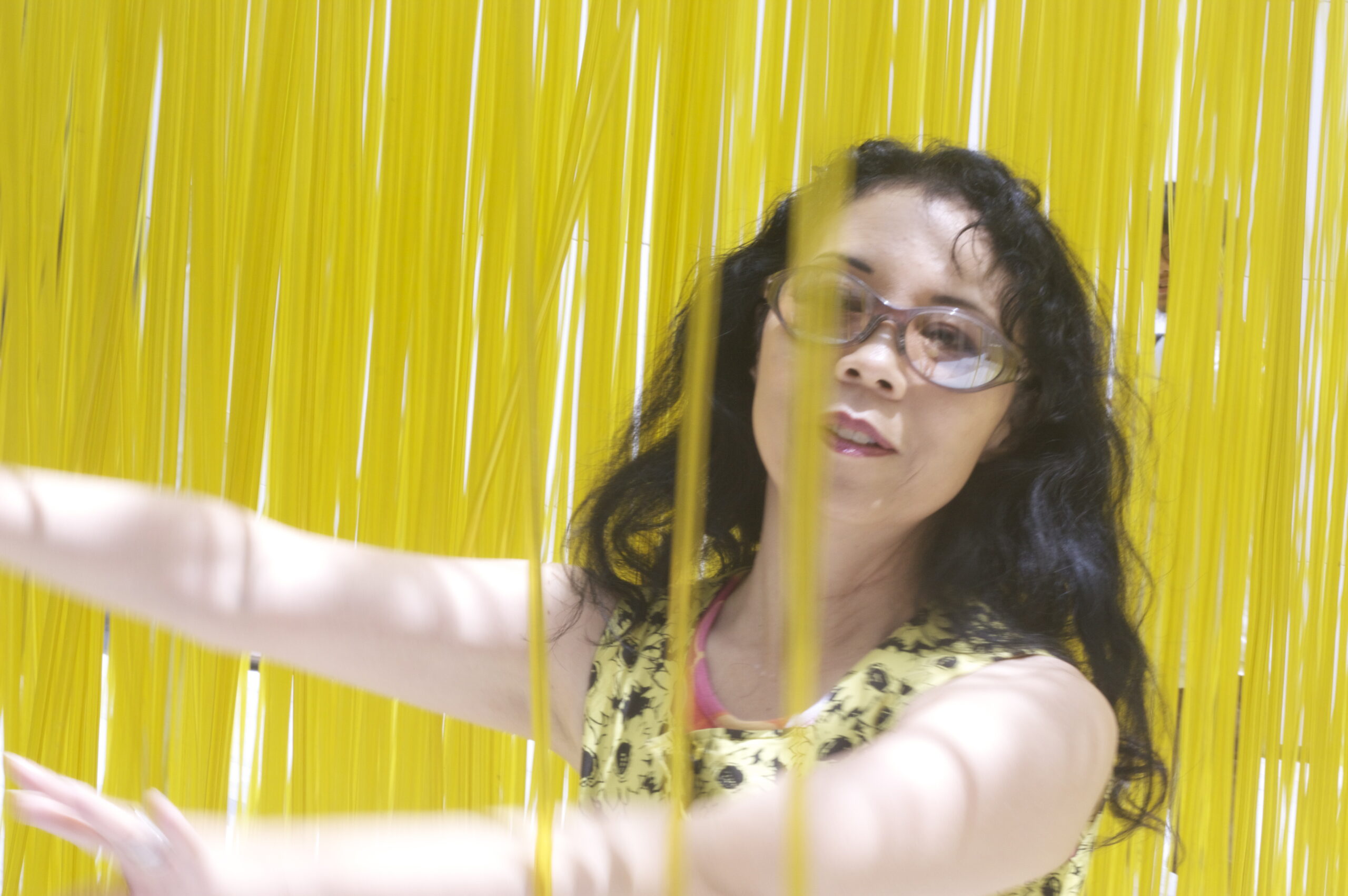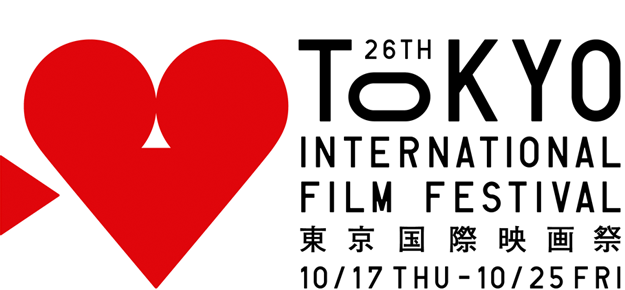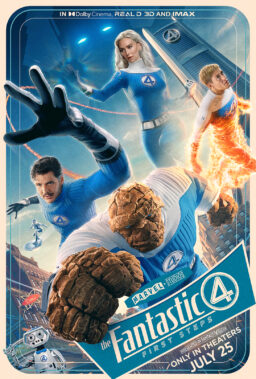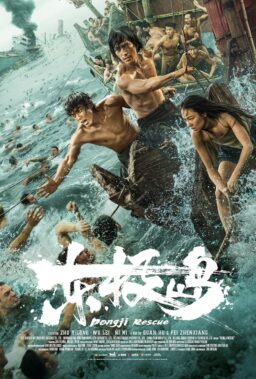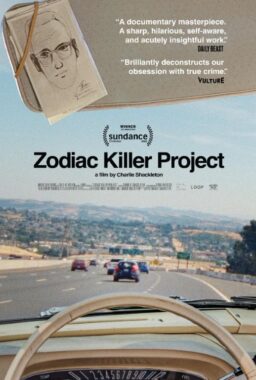You’re assaulted with visual information in Tokyo–from the commercials on the subway and rail cars to the regular posters that line the long underground corridors. The Tokyo International Film Festival mixes high tech with cosplay fanfare and a bit of Hollywood. The 27th TIFF is based in an upscale neighborhood of Tokyo, in a mega-complex development called Roppongi Hills, and has expanded to include a movie theater in Nihonbashi, another upscale neighborhood a few stations down the Hibiya subway line, and an exclusive one-night presentation at the legendary Kabuki-za.

“Big Hero 6,” this year’s opening film, brought the Disney Pixar touch to an animated feature—remolding the Marvel property into a more family-friendly and funny version that lives in its own universe, one that exists without X-men and men with muscles etched with details. Tim Burton was lending his “A Nightmare Before Christmas” inspired imaginings to the Roppongi Hills celebration. An exhibition of his drawings and other artifacts of his cartooning career was opening the day after the festival ended on Halloween. If that’s the Hollywood touch, then the festival’s tribute honoree, Hideaki Anno, is the Japanese otaku aspect, honored at this TIFF with the world’s first complete retrospective “The World of Hideaki Anno.”
While most Americans won’t be familiar with Anno, fans of Ghibli Studios will have seen some of his work. Anno attended the Osaka University of Arts and got his big break when Hayao Miyazaki needed more animators for his 1984 film “Nausicaa of the Valley of the Wind.” He later directed the TV animated series based on an original concept by Miyazaki, “Nadia: The Secret of Blue Water” (1990-1991) or ふしぎの海のナディア. Blue Water was the name of a mysterious magical blue gem stone and Nadia was in search of her father who turned out to be Captain Nemo. From 1995 to 1996, Anno directed the apocalyptic TV anime series: “Neon Genesis Evangelion” (新世紀エヴァンゲリオン).

That makes him part of a tradition that stretches back to Jules Verne and H.G. Wells but was popularized by the Japanese and includes “The Transformers”: mecha animation genre (actually pronounced meka (メカ). Mecha is short for mechanical and refers to objects while the word robot or robotto ロボットrefers to limbed vehicles.
Although “Nadia” began like a light-hearted frolic when a young inventor, Jean Rocque Raltique, becomes infatuated with a circus performer named Nadia and has to save her from jewel thieves, the story ends with Nadia the lion tamer and her pet white lion King, having both been tamed. From the beginning, Nadia doesn’t know much about her parents, but she does know that she comes from Africa. She learns trust and becomes more optimistic as a result of her relationship with Jean, who has saves her throughout the series. During the series, Nadia and Jean save the 4-year-old Marie who has been orphaned by the actions of the villain of the series: Gargoyle. Gargoyle desires the mysterious glowing stone that Nadia wears. At the end, the teeny bopper feel of this animated series darkens; both Nadia and Jean have discovered the truth about their fathers and the plot centers more on the conflict between Captain Nemo and Gargoyle.
Of course, “Neon Genesis Evangelion” centers on the search for identity of a young boy, Shinji Ikari, who is the designated pilot of the Evangelion Unit-01. The Evangelion is a giant robotic giant bio-machine of sorts. As its pilot, Shinji uses large gun-like weaponry to kill off giant monsters called Angels. Shinji when not a pilot is bullied in school and lacks confidence. He needs to learn to believe in himself as his given name suggests. After the TV series ended, there have been several films, the 1997 “Death & Rebirth,” the 1997 “The End of Evangelion,” and in the “Rebuild of Evangelion” reboot of the animated series the “Evangelion: 1.0 You are (Not) Alone,” the 2009 “Evangelion: 2.0 You Can (Not) Advance,” and the 2012 “Evangelion: 3.0 You Can (Not) Redo.” The “Evangelion: 3.0 You Can (Not) Redo” was released in the U.S. in January of this year. The next movie in the series, “Evangelion 3.0 + 1.0” will be released in Japan in 2015. No scheduled release date for the U.S.
If Hayao Miyazaki has continued the tradition of bright-eyed cute animated figures that began with Osamu Tezuka, then Anno is an influential part of the mecha animation for which Japan has become famous. Some cosplayers were even hired to greet film festival attendees for the Evangelion marathon (Sunday).
This Tokyo International Film Festival for the first time hosted the World Cosplay Summit, with people from all over the world, some coming as teams ready to pose and lip sync in their own native languages at the TIFF headquarters in Roppongi Hills. I was at the Ghibli Art Museum on that Saturday in Mitaka. If Cosplay wasn’t your thing, there were plenty of Halloween-related activities for all ages at Roppongi Hills, including a kids costume party.
In Japan, there are pilgrimage circuits for the faithful Buddhists and there is also a pilgrimage route to the otaku (geek) world and lovers of Japanese animation.

I prefer to embrace the kawaii (cute) factor and as part of my anime experience, I did a pre-festival visit to the Osamu Tezuka Memorial Hall in Takarazuka City, not far from the Takarazuka theater. The Takarazuka is famous for its romantic plays that feature an all-female cast–women play the men’s roles. Osamu Tezuka was indebted to Disney in his stylization of animals. His Astroboy (called Tetsuwan Atomu 鉄腕アトム in Japanese) came over the U.S. in 1963, the same year it was released in Japan, but several months later. His “Kimba” (ジャングル大帝 or “Jungle Emperor”) was the first color animated series created in Japan. Based on a manga series, the animated TV series was broadcast on Fuji TV from 1965-1966. The original American broadcast was made in 1966. The museum is small (700 yen for an adult) and shows original sketches as well as sketches inspired by Tezuka’s work. It has a reading section and a place where you can draw and stylize a limited number of Tezuka characters. I wasn’t the only foreigner there.
Just outside of Tokyo, in Kawasaki City, you can visit the Fujiko F. Fujio museum which opened in 3 September 2011. The city granted Doraemon official residence in 2012. Doraemon was first published in 1969. Fujio was given the Japan Cartoonists Association Award for excellence in 1973 and then the Shogakukan Manga Award for children’s manga in 1982. Fujio was the first recipient of the latter and then the first recipient of the Osamu Tezuka Culture Award in 1997. Doraemon became Japan’s first anime ambassador in 2008, appointed by the Japan’s Foreign Ministry. Doraemon is popular in India and in 2002 was featured in Time Asia magazine as an “Asian Hero.” Despite Doraemon’s popularity in Asia, the English dubbed version only came to the U.S. this last summer via Disney XD under the distribution of TV Asahi.
Fujiko Fujio is the nom de plume for the partnership of Hiroshi Fujimoto (1933-1996) and Abiko Motoo (1934-present). The partnership was formed in 1951 and the name Fujiko Fujio used from 1954 until 1987. Fujimoto remained producing work for children. Motoo focused on work for adults characterized by black humor. Fujimoto died of liver cancer.

The Fujiko F. Fujio Museum is located near the Noborito station (JR and Odakyu lines) where you take a special blue bus to the museum where there is no parking and no tickets being sold. Like the Ghibli Art Museum, you must pre-purchase (1,000 yen for an adult) and guests are let in during four different shifts.
If you’re planning to visit the Ghibli Museum, start with acquiring tickets and then plan your trip around it. There are a limited number of tickets available for foreigners (sold through Japan Travel Bureau). Once they are sold out, you’ll have to buy them in Japan through the convenience store Lawson’s. There are also services that will attempt to acquire tickets for an additional cost. From the Mitaka train station, you ride a special yellow bus for an additional fee.
Like the Fujiko F. Fujio Museum, guests are let in at intervals and you can’t be late. While the Fujio Museum is white and roomy with white clean services, the Ghibli Art Museum is small and cozy, filled with hidden corners and cleaver ways of letting light in. Zoetropes help explain how animation is made using film and even figures. There’s the catbus room which is just for children and special exhibits. The art of animation and of the Ghibli Studios are explained from various angles and with different media. While waiting you can stroll through the park and even visit the local zoo.
There are two additional anime museums in Tokyo. Both are listed in the Japan National Tourism Organization website. The Toei Animation Gallery was closed to rebuild and according to the attendant would open in 3-5 years. The Suginami Animation Museum was closed during my last days in Tokyo. Both are listed as free, but if you go to Tokyo, be sure to have someone check before you take the subway to visit.
Even with the retirement of Hayao Miyasaki, Japan has some long-standing traditions in anime that will be coming to the U.S. For mecha anime fans, the release of Hideaki Anno’s new film in 2015 continues his Evangelion series. This year, Japan’s anime ambassador has finally made it to the U.S. Although the most recent Doraemon movie, “Doraemon Stand By Me” brings the blue robot cat into 3D computer animation and was already released in Japan in late summer, it also is a step back. “Doraemon Stand By Me” re-treads some of the older stories of the series that were on display at the Kawasaki City museum. Perhaps we should call “Stand By Me” (no relation to the 1986 Rob Reiner movie or the 1961 Ben E. King song) a reboot.
There is no scheduled release date for the U.S., but the Doraemon movie will be released in Italy in November and in Indonesia, Singapore and Thailand in December of this year. In all, the movie will be shown in 57 countries in Asia and the Middle East. Doraemon might be afraid of cats, but Mickey Mouse may end up being his best friend in the U.S.
If an ear-less blue cat and an American mouse seem like an unlikely combination, so does the Charlie Chaplin at the tradition bound Kabuki-za until you learn the historical connections. Chaplin did indeed visit the Kabuki-za and he met the grandfather of the actor chosen to perform one scene for a special evening performance just before the traditional break (for an exquisite dinner) and the screening of Chaplin’s 1931 “City Lights.”
The Kabuki-za is both old and new. This isn’t the Kabuki-za I visited long ago. The original theater opened in 1889 and is now in what the press materials calls its fifth generation having just re-opened in 2013 after three years of rebuilding. A tall skyscraper now rises out of the Kabuki-za–offices unrelated to the Kabuki. Rumors are that the kami-sama of the building aren’t happy, causing subsequent tragedies. Of course, that’s not what the Kabuki-za tour talks about. On the fifth floor of the Kabuki-za Tower which is now the Ginza Kabuki-za complex, you can see seasonal exhibits. The current one recounts the long relationship between New York City and the Kabuki-za. Kabuki first came to New York in 1960 and was just there in July 2014.
For your average Japanese citizen, Kabuki is an expensive and time-consuming affair. Think of the Wagner Ring Cycle. A play may run four hours. We were treated to a dramatic 15-minutes of a mythical lion on a bridge from the play “Shakkyo” with actor Somegorō Ichikawa VII showing hair-ography in its original form by dramatically whipping around a body-length red wig mane. This is a lion before the Lion King (also playing in Japan) and before the Japanese really knew what lions looked like. Ichikawa’s great-grandfather met Chaplin and Ichikawa VII met one of Chaplin’s descendants. There is history in Tokyo, the old and the new make it. The Japanese have always had a flair for drama.
Yet in a way, the actors of the Kabuki-za may be the original animation dancers and mecha stars. Animation is a hip hop style of dance that imitates the jerky motions of stop-motion animated characters while animatronics is a hip hop style that imitates animatronic robots. This goes beyond the old school robot dance. Both styles are popular in Japan. In Kabuki, many of the plays are adapted from the traditional Japanese puppet plays and some people credit the exaggerated movements distinctive to kabuki to a time when actors began to imitate the limited mechanized motion of bunraku puppets. Bunraku puppets aren’t marionettes like Pinocchio, but sophisticated puppets without strings manipulated by puppeteers dressed in black.
Kabuki has influenced Japanese cinema, including anime. Some kabuki stars have also performed in movies, including famous onna-gata (a kabuki actor specializing in portraying female roles) Bandō Tamasaburō V. Somegorō Ichikawa VII has also appeared in movies.
Watching “City Lights” and listening to the laughter, I was reminded that once upon a time all movies required reading. Accents and language didn’t matter. Audiences have revisited silent movies such as “The Artist.” The technology that brought us sound at the movies raised the volume of babble and now technology like Google translate, email and Skype have made the world smaller again. Japanese animation has brought the world Japan beyond the samurai and is ultimately a part of what makes Japan cool.
